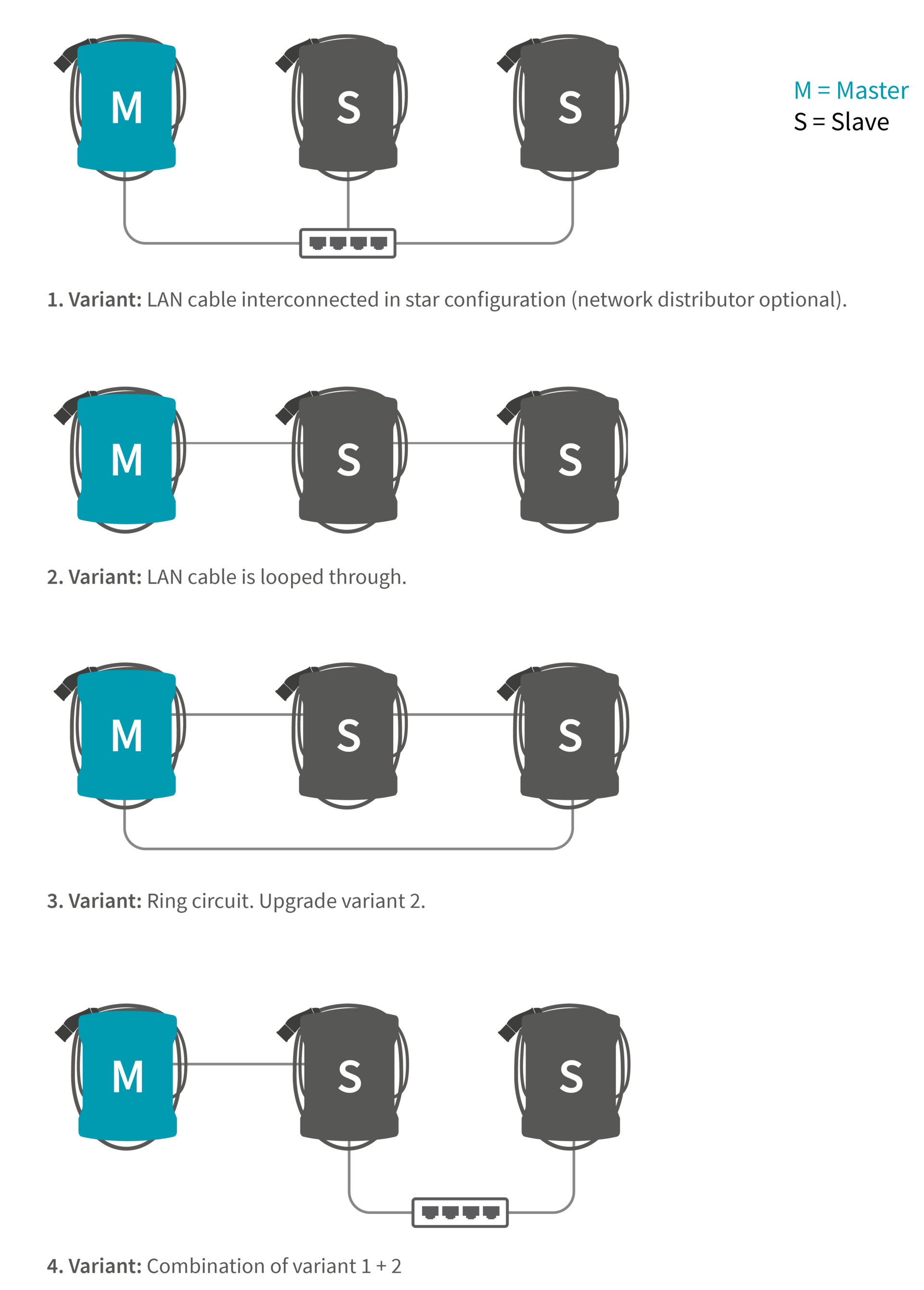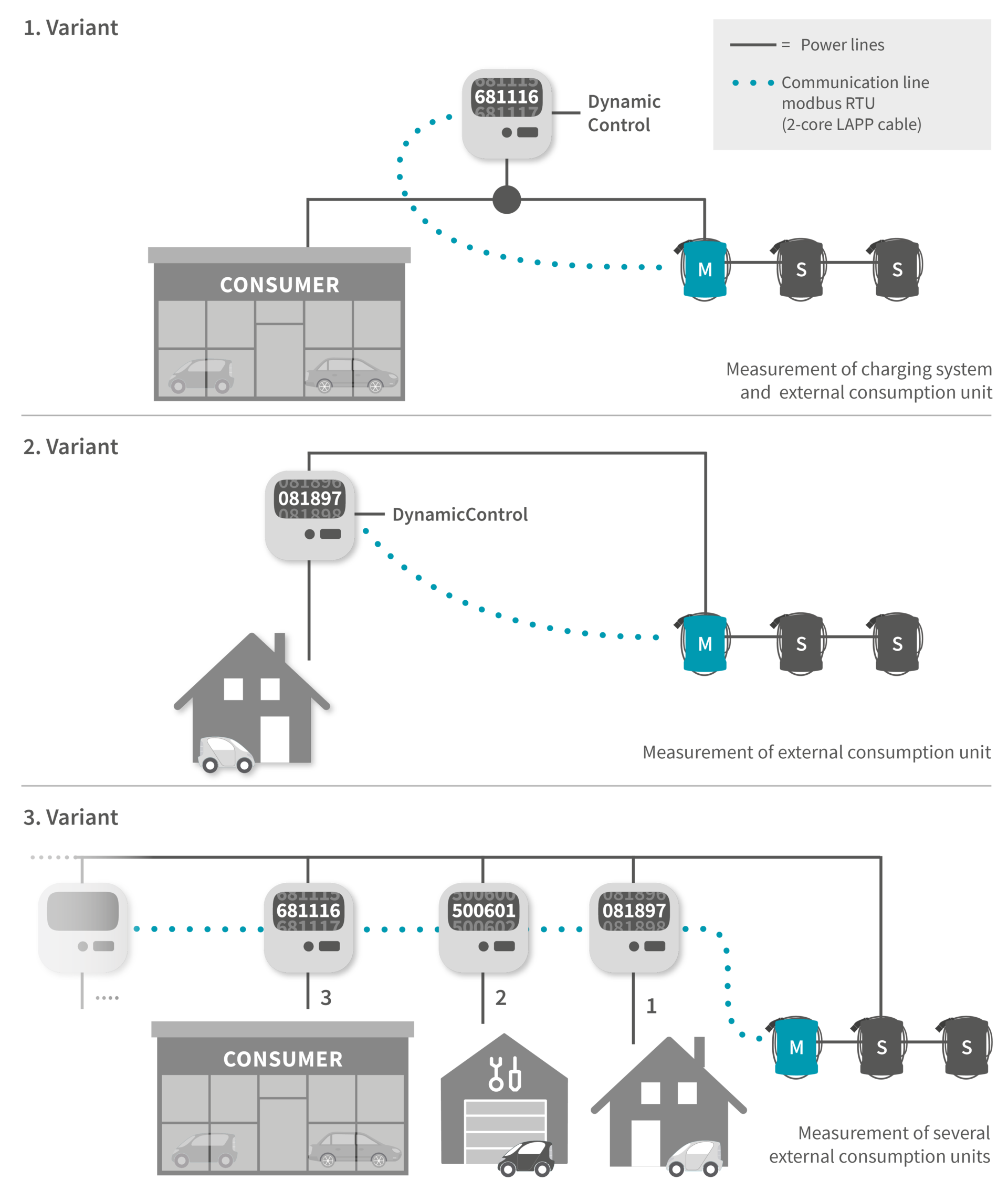As a rule, the available feed-in power is limited to a maximum. Since the instantaneous consumption of existing units represents a dy-namic current flow, it is necessary to be able to react flexibly by means of dynamic load management in the charging system. This can be realized, for example, by means of external consumption measurement. The instantaneous power of existing consumers is thus recorded and read out by the master unit of the charging system. The difference between the maximum feed-in power and the power currently being drawn is hereby calculated. In the charging system, therefore, only this instantaneous difference is released to charge vehicles. This counteracts load peaks, for example.
A further option for implementing dynamic monitoring is the integration into an energy or building management system. The communica-tion takes place via Modbus-TCP. In addition, the basis for "smart charging" via OCPP 1.6 is already set in the WALTHER charging systems. Some backend providers thus enable dynamic load management via backend.


